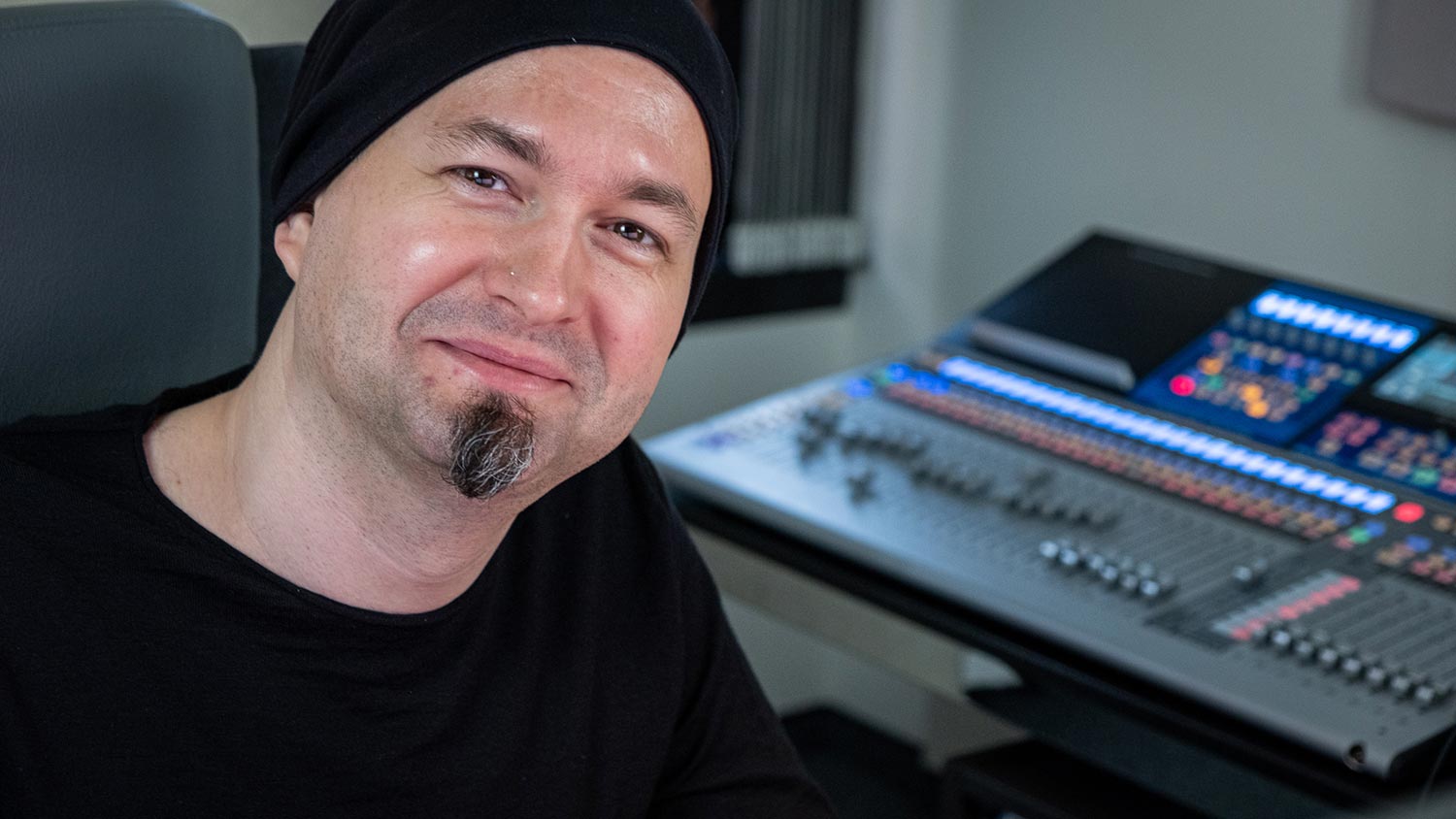More musicality, greater ease-of-use, new functions and improved workflows: The audio interface ARA Audio Random Access has raised the interaction between compatible DAWs and plug-ins to a new level. Now this important standard is ten years old.
Celemony Software GmbH, Munich, 15.11.2021 – (ictw) – ARA Audio Random Access expands existing plug-in interfaces like VST or Audio Unit to include a “musical information channel”. Thanks to ARA, DAWs and plug-ins can exchange information about things like the notes, tempos and chords being used – a dialogue that is advantageous to both parties, as it allows DAWs and plug-ins to combine their strengths and offer functions that are considerably more musical. ARA also provides direct access to all audio files, eliminating the tiresome transfer process that some plug-in concepts would otherwise require, as well as making new functions and workflow improvements possible – especially for arranging and comping.
ARA was developed by Celemony in collaboration with Presonus Software and was presented for the first time in the fall of 2011, with Melodyne 1.3 and Studio One 2 operating in tandem. The seamless interaction and the new workflows were received with enthusiasm and soon ARA was being supported by other manufacturers of both DAWs and plug-ins.
Today, most of the leading DAWs – including Pro Tools, Logic Pro, Cubase, Studio One, Cakewalk, Nuendo, Samplitude, Sequoia, Mixcraft, Reaper and Waveform – support ARA in one form or another. ARA support on the plug-in side can be found in Melodyne, SpectraLayers, Autotune, RX 9, VocAlign and some more. Which of ARA’s many possibilities are actually used in any given case depends upon the technical framework and the product strategy of the manufacturer in question.
Since May 2021, the ARA Audio Random Access Software Development Kit (including detailed documentation) has been available on GitHub as open-source software under the Apache 2.0 license. This makes it even easier for interested developers to familiarize with ARA and to integrate it into their projects.
DAWs with ARA support: Apple Logic Pro; Steinberg Cubase, Nuendo; Presonus Studio One; Cakewalk by Bandlab; Cockos Reaper; Magix Samplitude, Sequoia, Acid Pro, Sound Forge; Tracktion Waveform; Acoustica Mixcraft; Avid Pro Tools (Audio-to-MIDI)
Plug-ins with ARA support: Celemony Melodyne; Steinberg SpectraLayers; Antares Autotune Pro; Synchro Arts Vocalign, Revoice Pro; Izotope RX Music Reblance, RX 9 Spectral Editor; Bandlab Drum Replacer (Cakewalk only); SoundRadix Auto-Align Post 2
Quotes
“Harnessing the full power of Melodyne’s industry-leading pitch & time editing and analysis technologies is just impossible when being limited to the popular realtime-focussed plug-in APIs. A decade ago, we teamed up with PreSonus and started exploring how these standards could be extended. The aim was enabling the plug-in to access the crucial host arrangement information such as the audio file data, the song tempo map, the chord track and more. And for the host, utilizing the technologies provided by the plug-in to access the data for Audio-to-MIDI conversion or tempo & chord analysis, for adopting audio material automatically to the arrangement via time stretching, to enable smooth transitions across cuts and so on. Needless to say, we also wanted the integration to feel as seamless and natural for the user as possible. And of course, we envisioned these extensions to be eventually adopted by other companies across the industry.”
“Fast-forward ten years, these ideas have eventually become ARA Audio Random Access 2.0: a mature API backed by a comprehensive open-source SDK, enjoying support by the vast majority of DAWs and an ever-growing number of plug-in vendors. I’m proud of the vibrant developer community that carries ARA in such a hugely successful way, and I can’t wait to see all the exciting features that the next decade of ARA will bring to millions of audio software users.”
Stefan Gretscher, Senior Software Engineer at Celemony und ARA Lead Developer
——-
“For PreSonus, defining ARA together with Celemony was a perfect match as we were able to look at what’s needed for a deeper product integration from both the host and plug-in perspective. ARA is the technical foundation for advanced workflows in Studio One such as audio to MIDI, tempo and chord detection, and many more.
It all started with Melodyne and Studio One. It’s been exciting to accompany the evolution of ARA over the past ten years and watch the wide adoption in our industry making it a de facto standard.”
Matthias Juwan, PreSonus Software co-founder and CTO
——-
“Implementing ARA within our flagship products Cubase, Nuendo and SpectraLayers was a great decision on our behalf that our customers welcomed whole heartedly. It perfectly complements our own VST plug-in interface by harnessing the power offered by ARA-compatible programs. ARA allows a very tight integration between SpectraLayers, Cubase and Nuendo by synchronizing audio clips both ways so that content, timing, colors and playhead remain synchronized at all time. Plus, new audio clips created in SpectraLayers can also be imported back into the host, without losing time synchronization. This unlocks deep editing possibilities and feature interactions that were simply not possible before.”
Stefan Trowbridge, PR Manager at Steinberg
——-
“ARA2 technology has enabled us to offer our users a much faster and more intuitive workflow with compatible DAWs, allowing complex vocal editing tasks to be completed in seconds with just a few mouse clicks. A key benefit delivered by ARA2 is the ability to process multiple tracks simultaneously which is a huge timesaver for our customers.”
Joel Heatley, Marketing Director at Synchro Arts
——-
“The natural constraints of the modern DAW limit iZotope’s ability to share some of our most magical tools with our customers. ARA helped us bring tools like RX Music Rebalance and RX Spectral Editor right into the hands of the music community to enable previously unimaginable workflows. We appreciate your efforts with this technology and the capabilities it unlocks for us.”
Dan Gonzalez, Principal Product Manager at iZotope
——-
“We believe that ARA is instrumental for the plug-in industry and creators because of its unique ability to exchange audio information, enabling processing that would otherwise not be possible with current audio plug-in SDKs. With ARA2, we’re able to bring the power of Auto-Align Post for the first time to ARA2 supported DAWs such as Steinberg Nuendo and Presonus Studio One.”
Daniel Buck, Marketing Manager at Sound Radix
——-
ARA Timeline
2011
- First publication of ARA and release as part of PreSonus’ Studio One Version 2 as well as Melodyne editor, assistant and essential version 1.3 in October
2013
- ARA comes to Cakewalk Sonar X3 and is still part of Cakewalk by Bandlab until today
2014
- ARA becomes available in Tracktion 5 (today Tracktion Waveform)
2015
- Cakewalk releases Sonar Platinum which included the ARA capable Drum Replacer
- Synchro Arts implements ARA in Vocalign
2016
- Magix adds ARA-support for Samplitude Pro X3
2017
- Magix adds ARA-support to Sequoia 14
- Cockos introduces ARA to Reaper 5
- Acoustica adds ARA to Mixcraft 8
2018
- Version 2 of ARA was announced in January 2018 and first implemented in Studio One Version 4 and Logic Pro X Version 10.4
- ARA-support in Antares Autotune Pro
2019
- Steinberg adds ARA-support to Cubase 10, Nuendo 10 as well as to SpectraLayers 6
- Magix adds ARA to Sound Forge 13
2020
- Synchro Arts brings ARA-support to Revoice Pro 4
- Magix adds ARA to Acid Pro 10
- iZotope adds ARA to RX 8 Music Rebalance
2021
- The ARA SDK is made available as Open Source under https://github.com/Celemony/ARA_SDK
- iZotope releases RX 9 which include the new ARA-based Spectral Editor
- SoundRadix adds ARA to Auto-Align Post 2
The ARA SDK on GitHub
https://github.com/Celemony/ARA_SDK
About Celemony
Celemony is the pioneer and market leader in the musical, note-based editing of audio. The company’s principal product, Melodyne, inaugurated this type of audio editing in 2001, established itself in the intervening years – for vocal editing in particular – as the standard worldwide, and has gone on pushing out the envelope in innovative audio editing ever since to the limits of what is technically possible. In 2008, for example, Celemony presented its patented DNA Direct Note Access, which extended Melodyne’s editing capabilities to polyphonic audio material – right down to individual notes within chords. Subsequent versions of Melodyne brought further technological innovations: the unique Sound Editor, Multitrack Note Editing for the simultaneous note-based editing of an unlimited number of audio tracks, and sophisticated tempo and chord functions, as well as the detection and separate editing of sibilants on vocal tracks. Other important technologies developed by Celemony include the musically intelligent restoration tool Capstan and the pioneering plug-in interface ARA. Melodyne and Celemony have won numerous awards – among them, the Technical Grammy in 2012.
PLEASE DONATE
If you find this content helpful, please consider a donation. Thank you!












